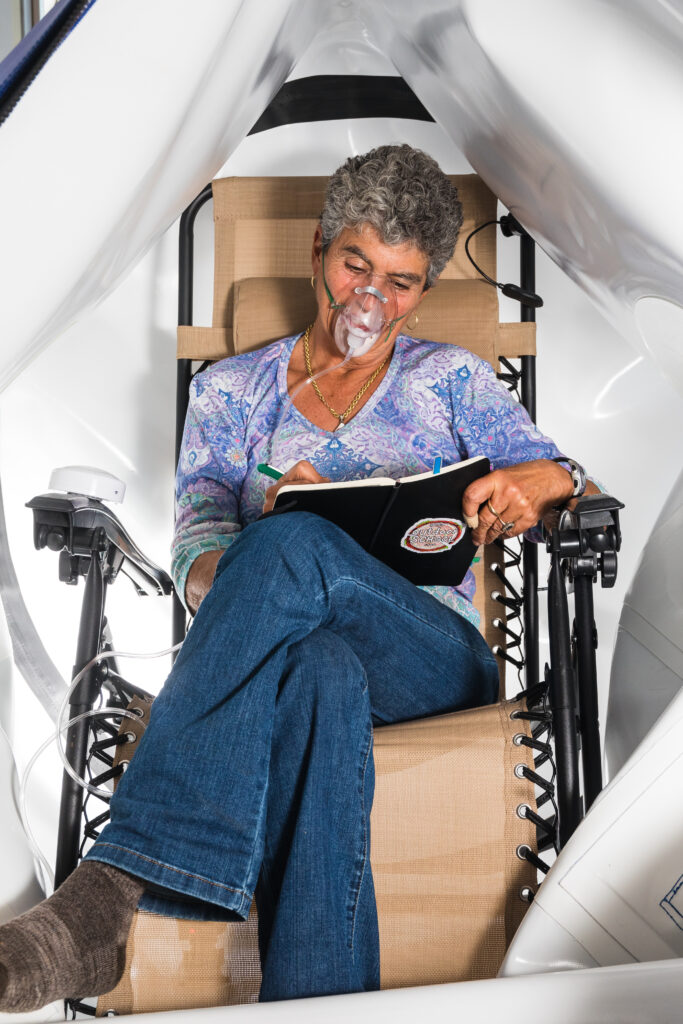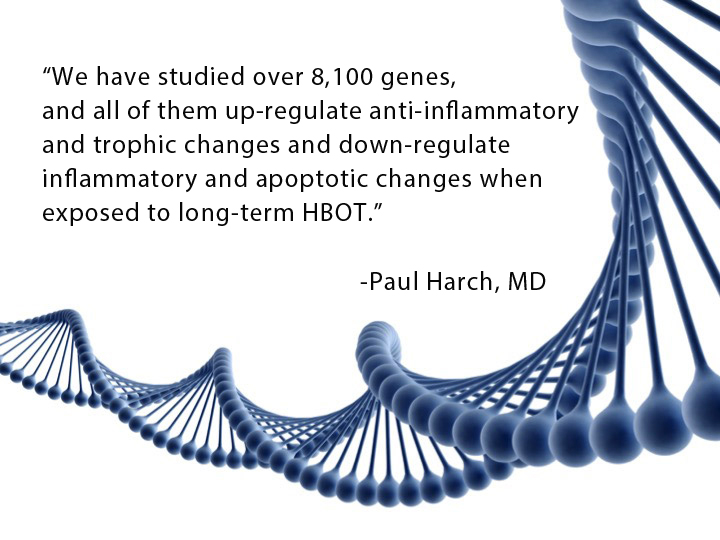
Hyperbaric Oxygen Therapy (HBOT) is, simply, the medical use of oxygen at higher than average atmospheric pressure.
Increased pressure and oxygen levels have potent physical effects, including:
- Reducing inflammation
- Speeding tissue healing (brain, muscle, bone, connective tissue)
- Fighting microbes, viruses, bacteria, and fungi
- Increasing neuroplasticity
How Does It Work?

Normally, when you breathe air, the oxygen is picked up in your lungs by your red blood cells and taken throughout your body through your network of arteries.
However, when you increase atmospheric pressure (in our case, to 1.3 atmospheres, which is considered Mild HBOT), the oxygen is sent directly into all your body’s fluids, tissues, joints, and organs. It’s kind of like using increased pressure to send carbon dioxide into water to make seltzer,
That increased pressure is sending oxygen to places where your vascular system doesn’t go.
This is why HBOT can address concussions, non-healing wounds, stroke, and degenerative neural conditions such as MS, Parkinson’s and dementia.
The US military is using HBOT to treat TBI and PTSD in veterans.
In addition to killing the spirochete that causes Lyme disease (which dies when exposed to high levels of oxygen), it relieves Lyme-induced inflammation and restores Lyme-disabled immune function.
HBOT’s potent anti-inflammatory effects also allow people to recover from a wide array of conditions such as arthritis, Crohn’s Disease, and optic neuritis. It is helpful for rheumatoid conditions, thyroiditis and other immune disorders.

“Hyperbaric Oxygen Therapy has been an absolute game-changer!
I was referred for symptoms of Long Covid, which amazingly resolved after only a few sessions.”
— M.
Why Does HBOT Affect So Many Different Conditions?
Research demonstrates that hyperbaric oxygen therapy:
- Kills parasites, bacteria, and other microbes
- Decreases inflammation
- Normalizes immune function
- Speeds tissue healing
- Heals radiation-damaged tissue
- Increases stem cell proliferation and differentiation
- Changes gene manifestation
These capacities cover many common illnesses and injuries.
How Does HBOT Help The Brain?
HBOT spurs the brain to heal, even years after the initial insult. At 30-40 treatment hours, brain scans show the brain to be growing new blood vessels, new nerve connections, and bringing idling neurons back online.
Research also shows that HBOT also induces remylination, which is important for people dealing with MS and neural Lyme disease.
For people with fibromyalgia and chronic migraines, it reduces inflammation and stimulates aberrant pain pathways to rewire.

For more clinical information regarding HBOT and the wide variety of medical conditions it can treat, visit our Research page.
“Hyperbaric oxygen is a powerful modality that plays a big part in shaping my chronic-lyme-free and CIRS/mold illness-free future!“
– C.L.

